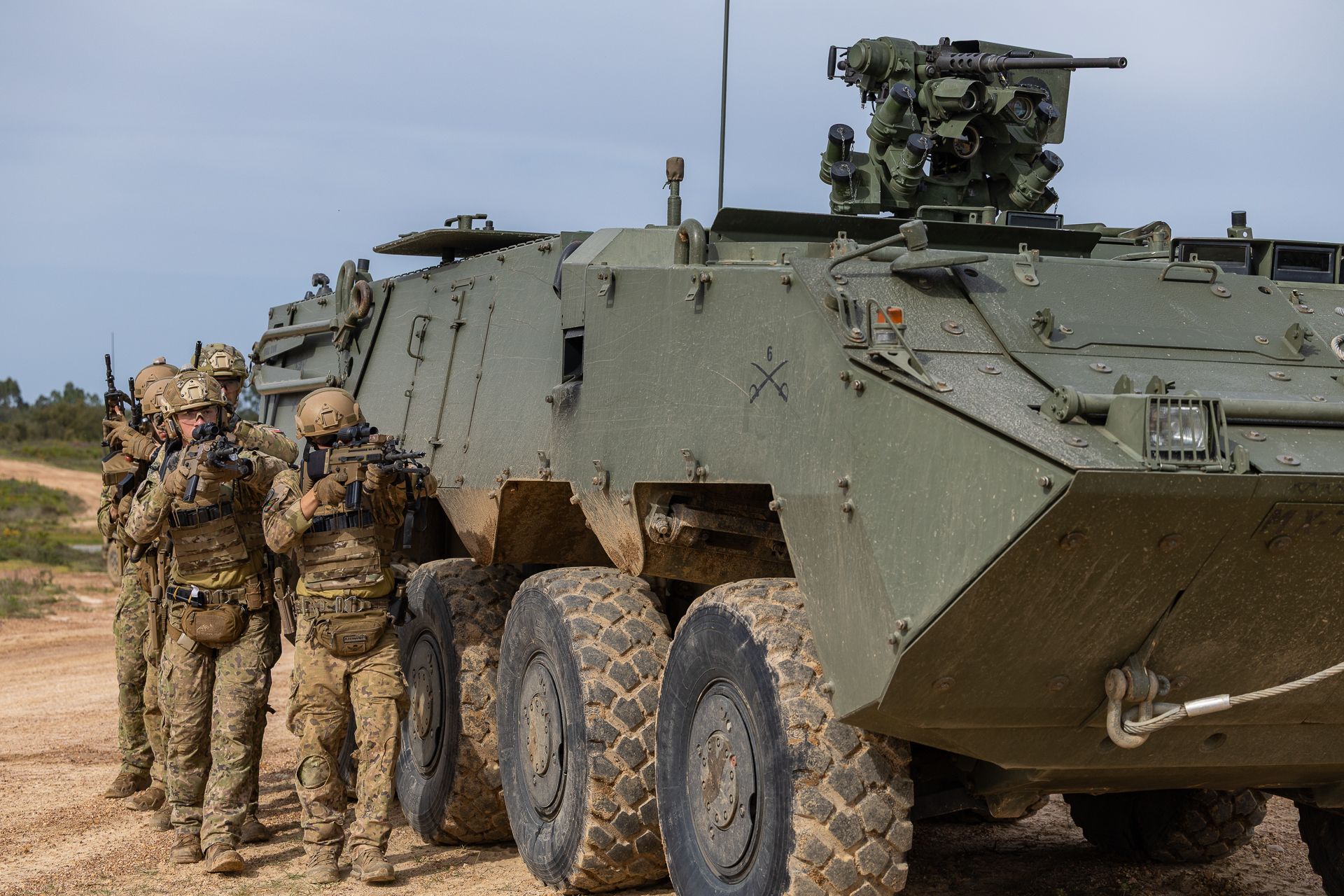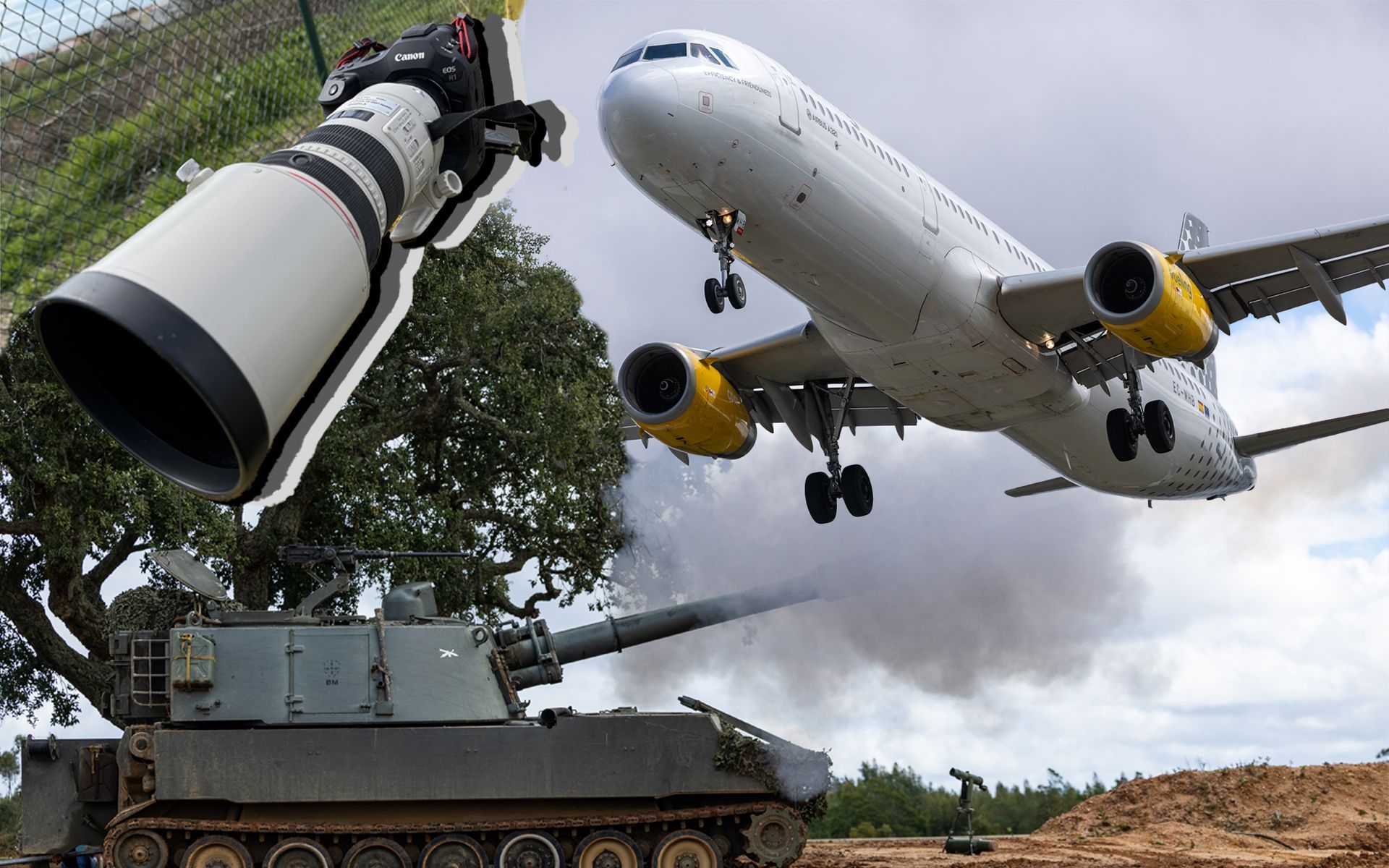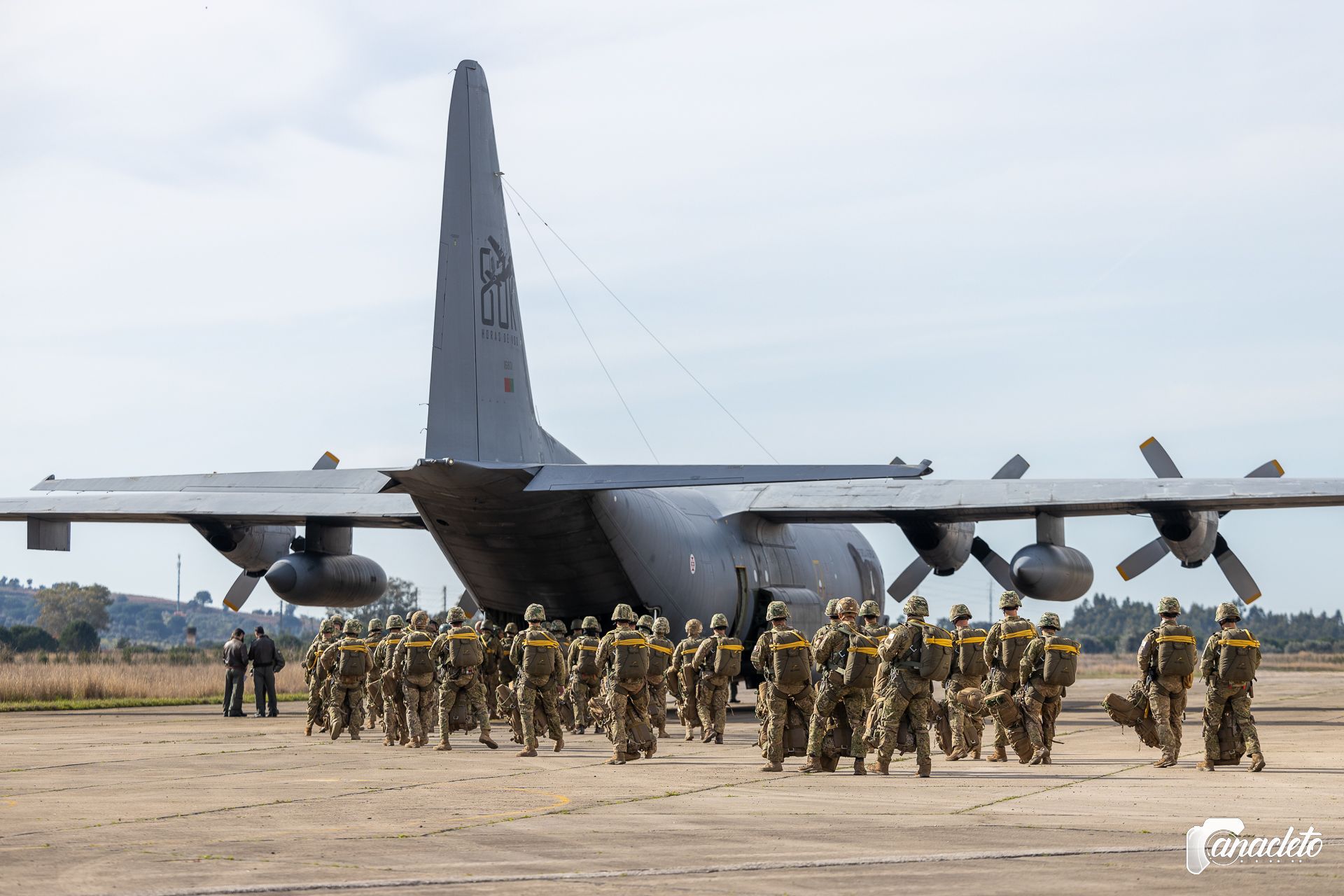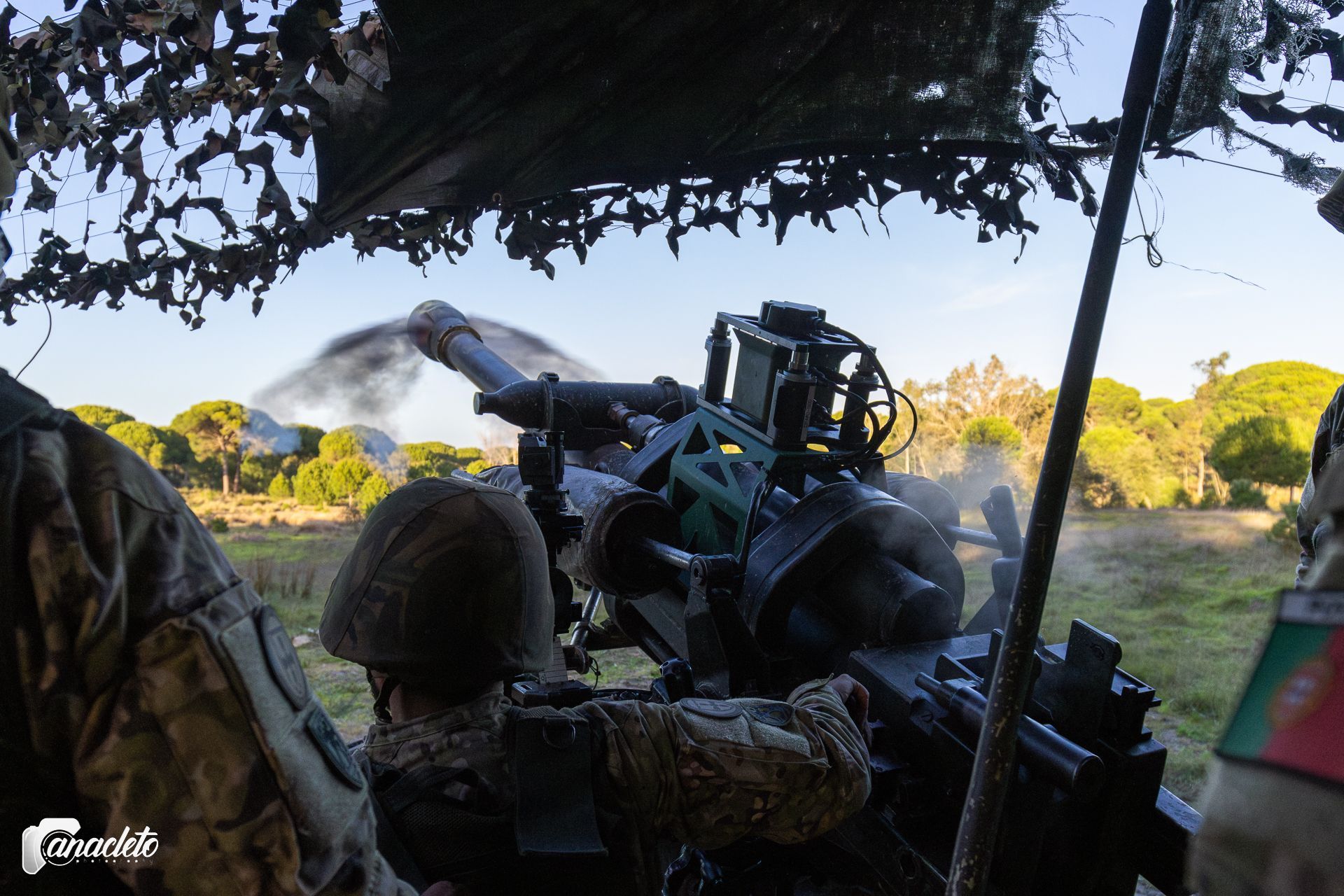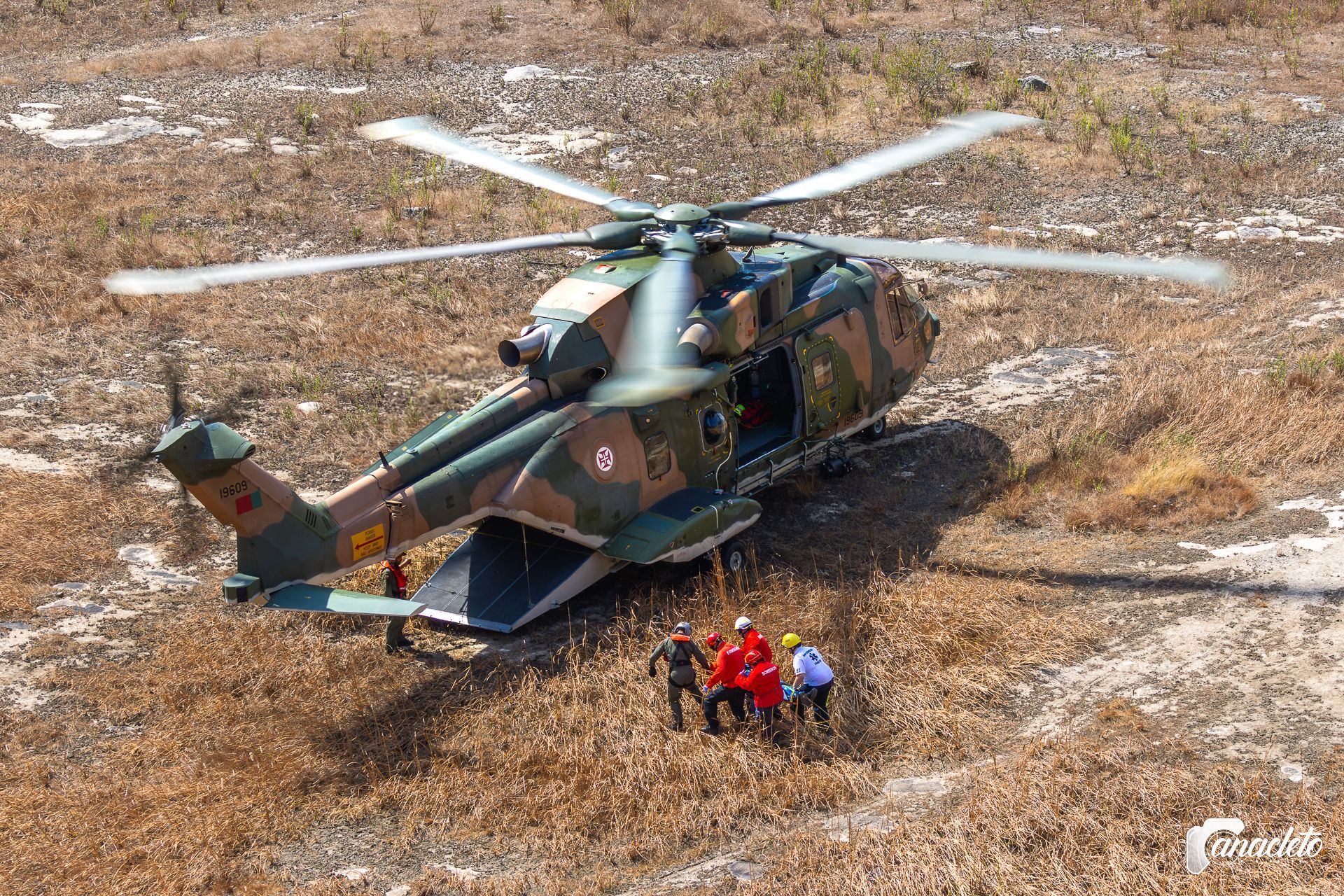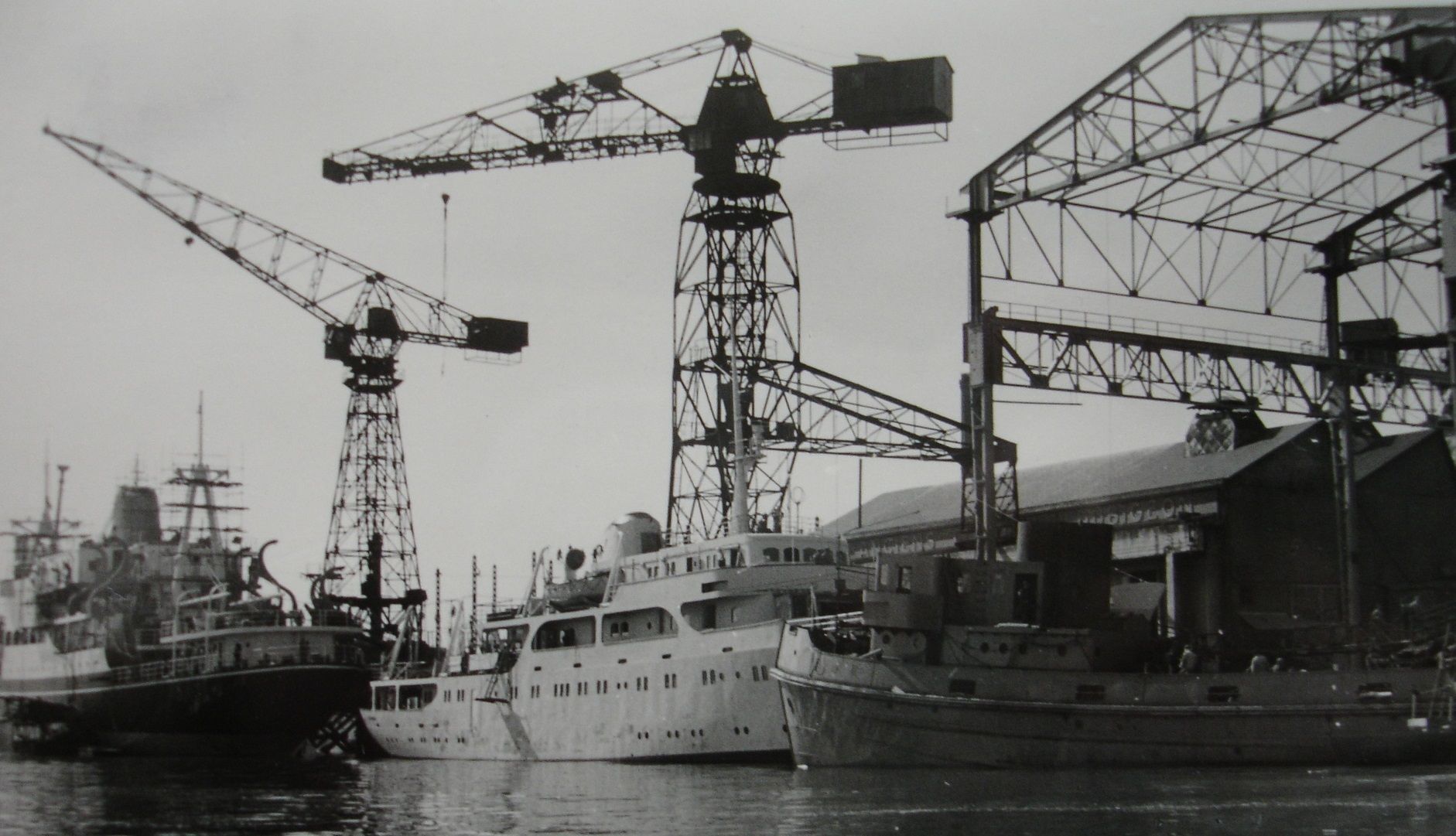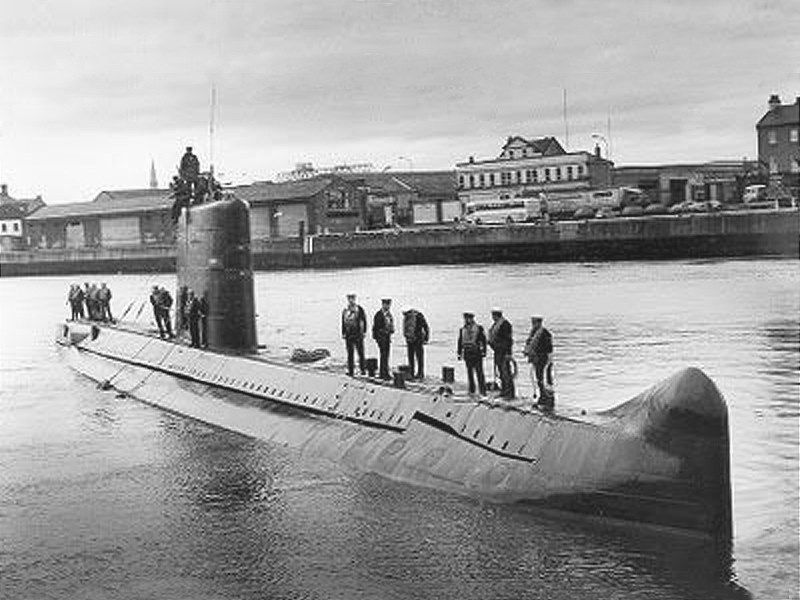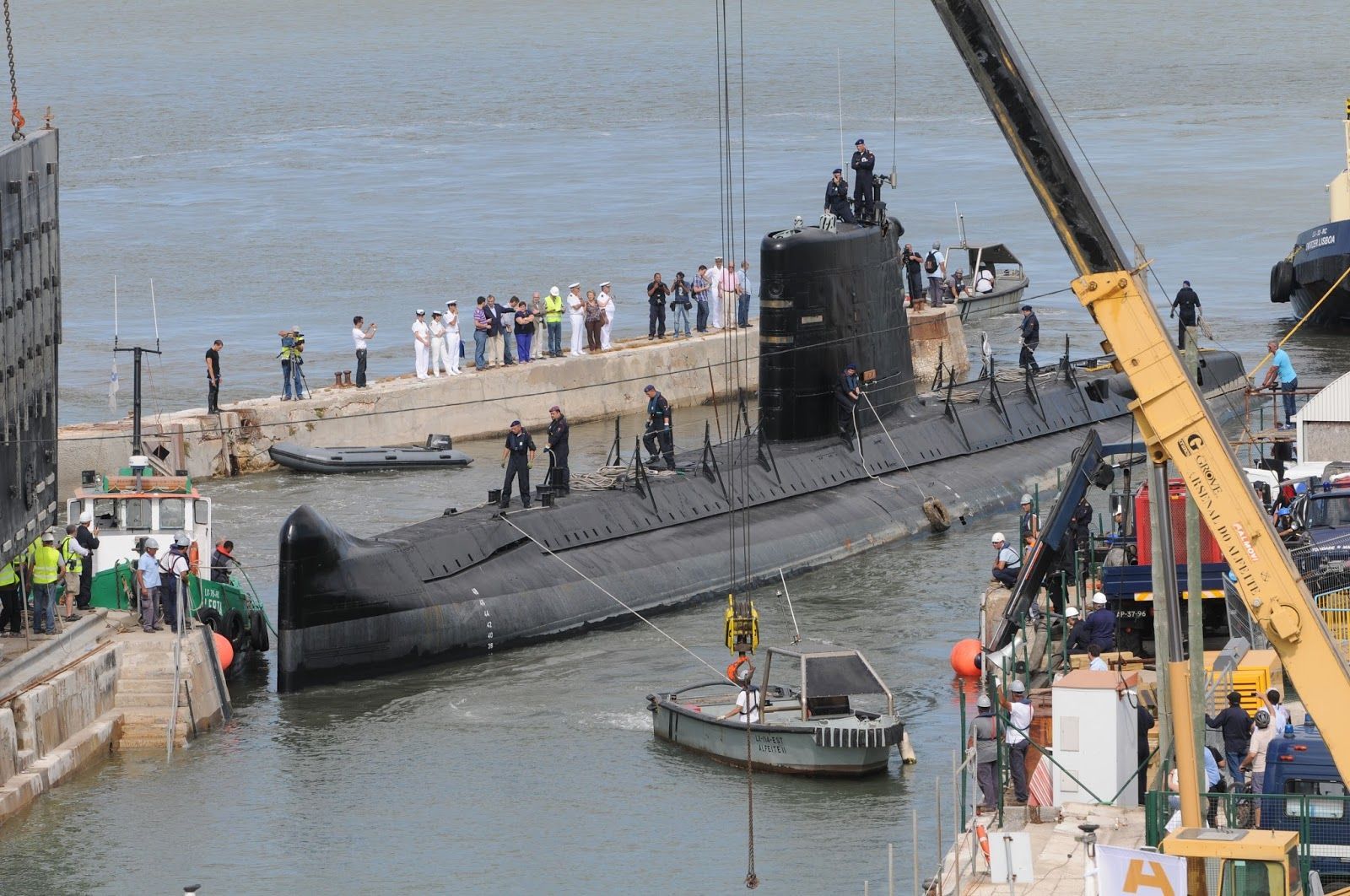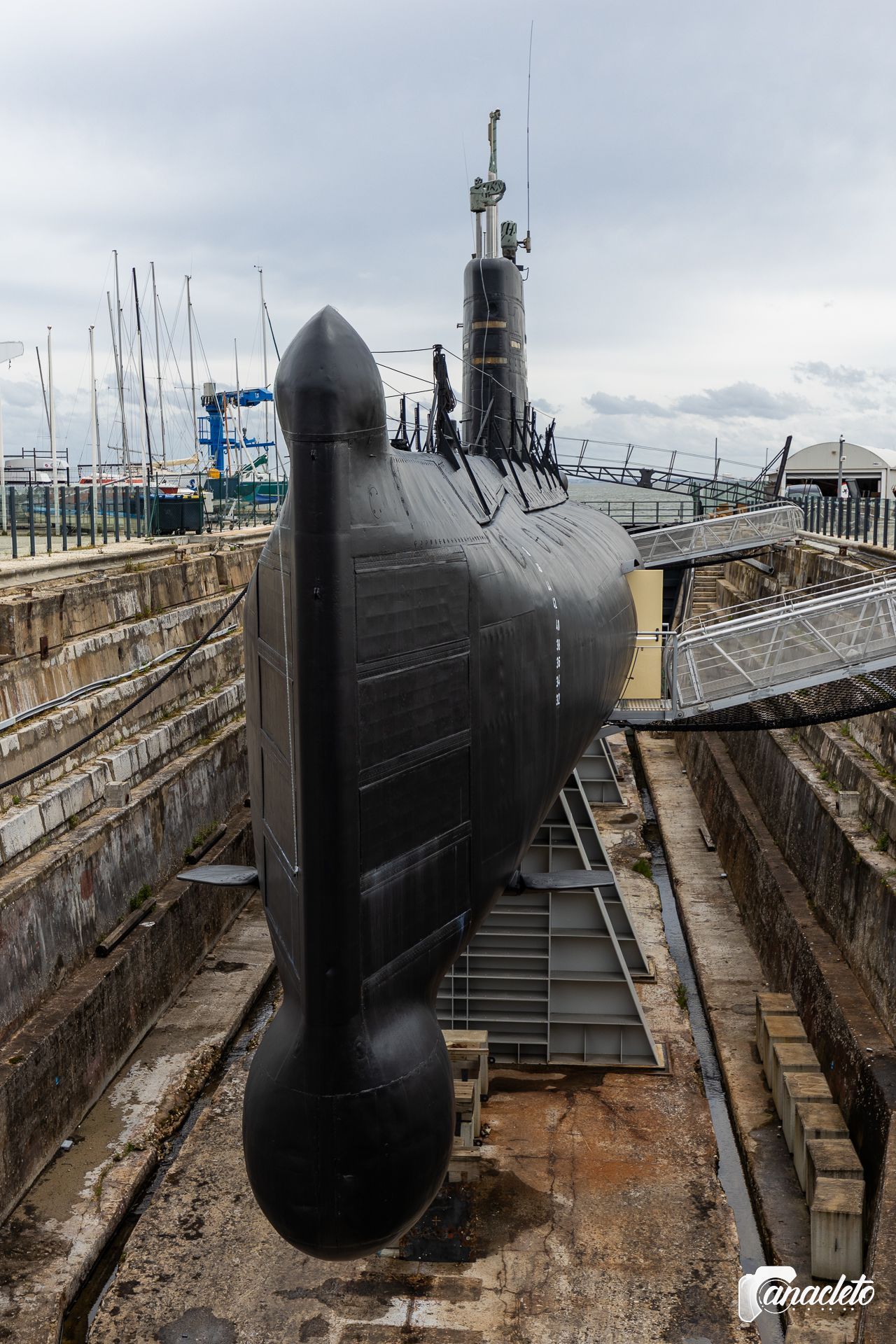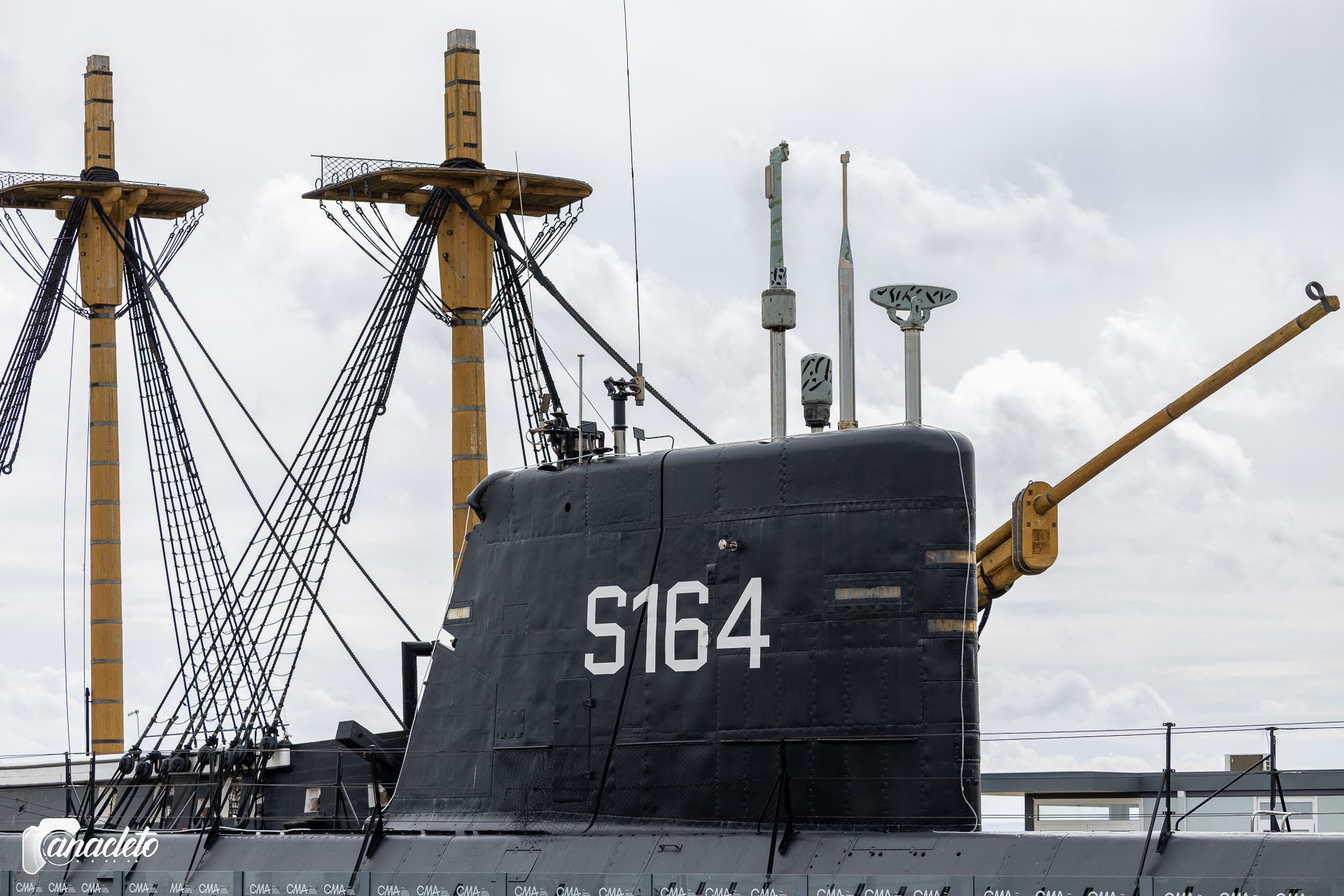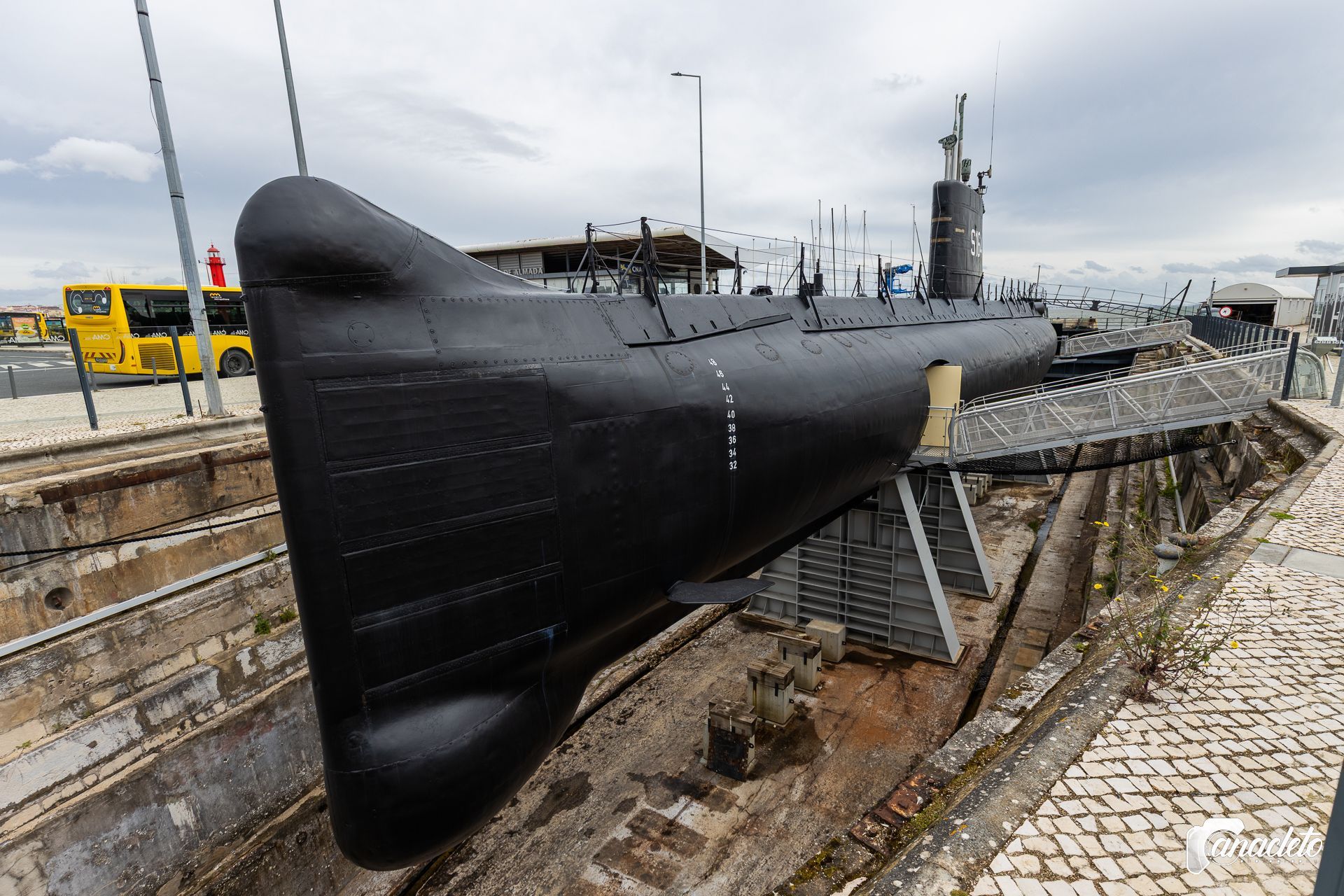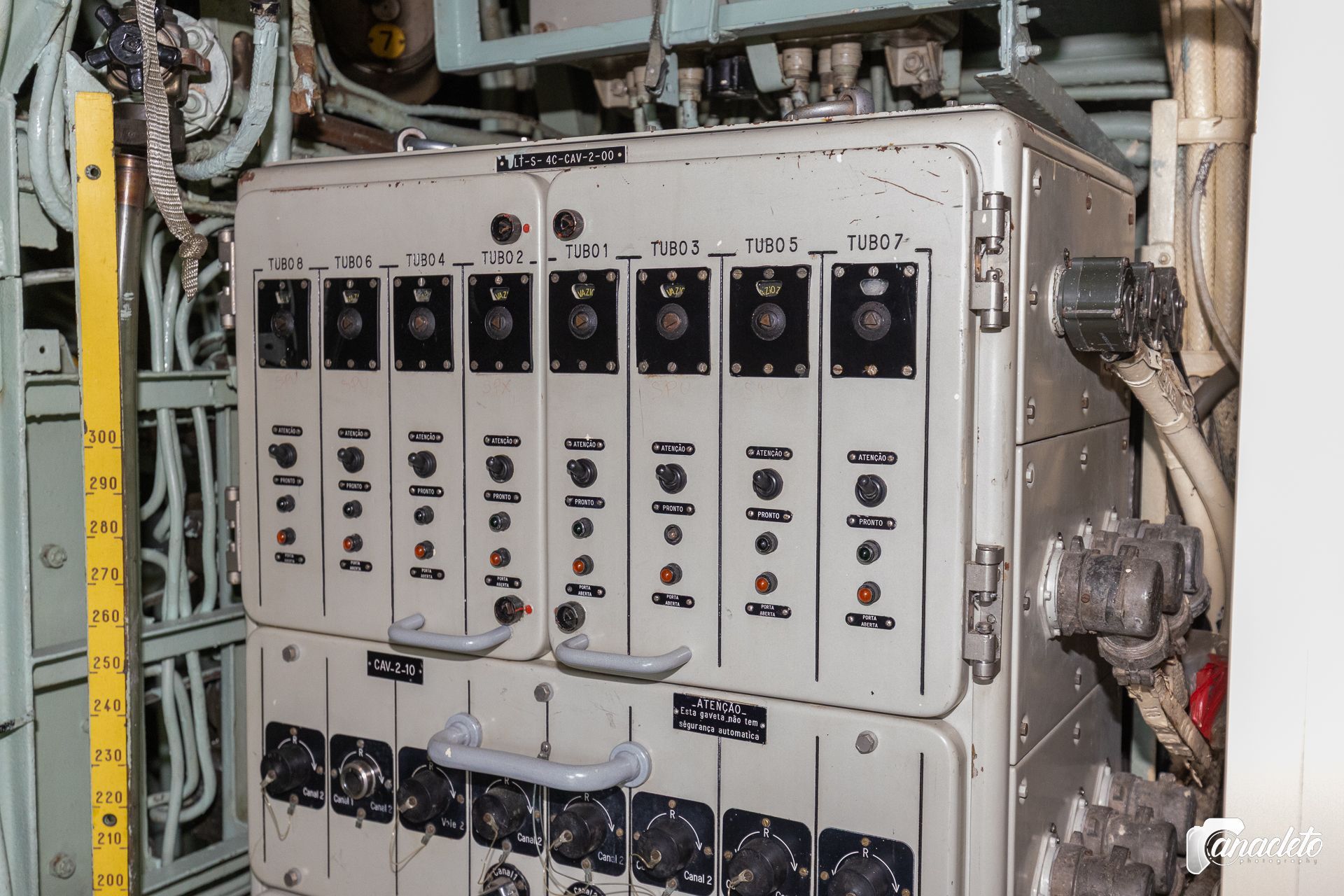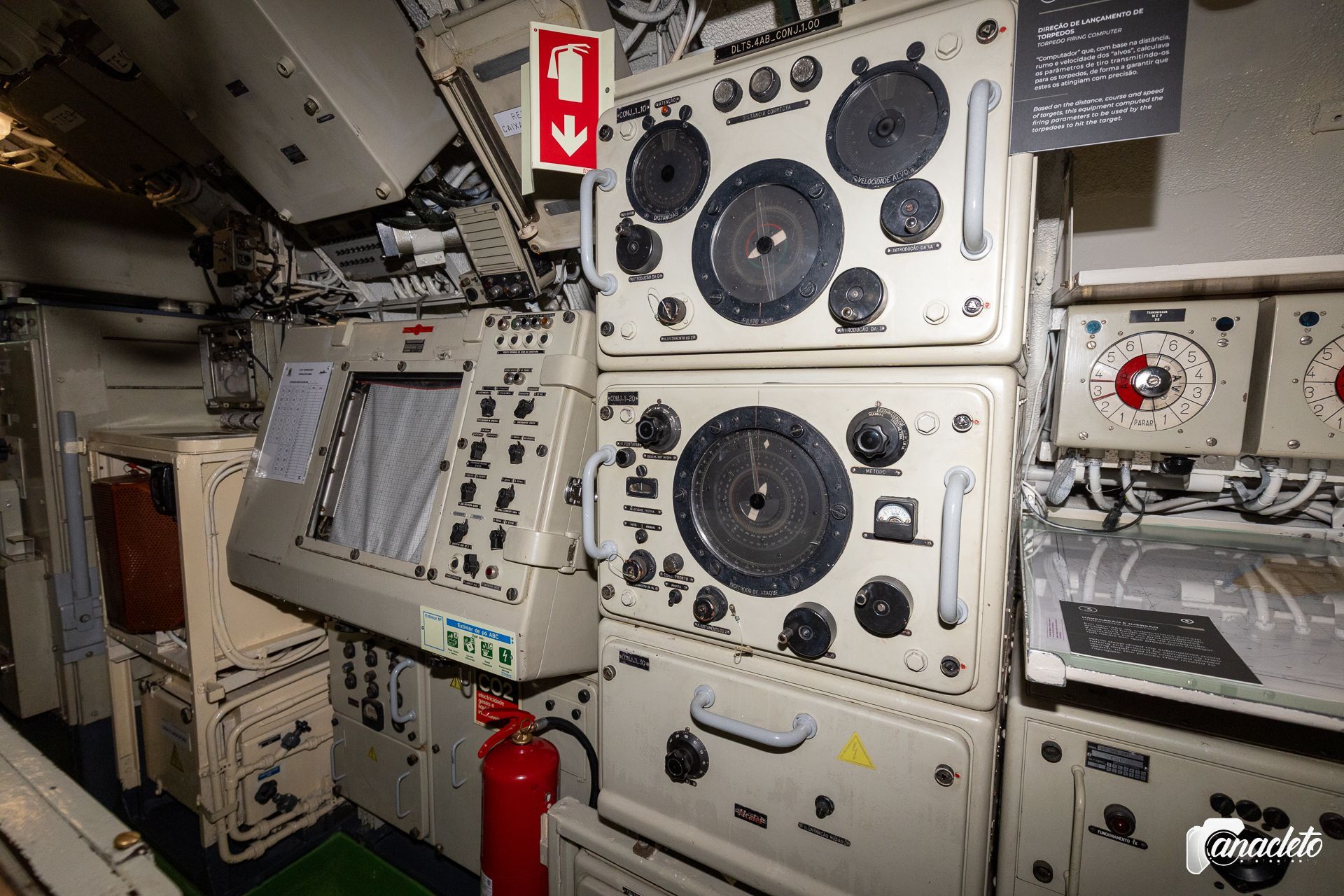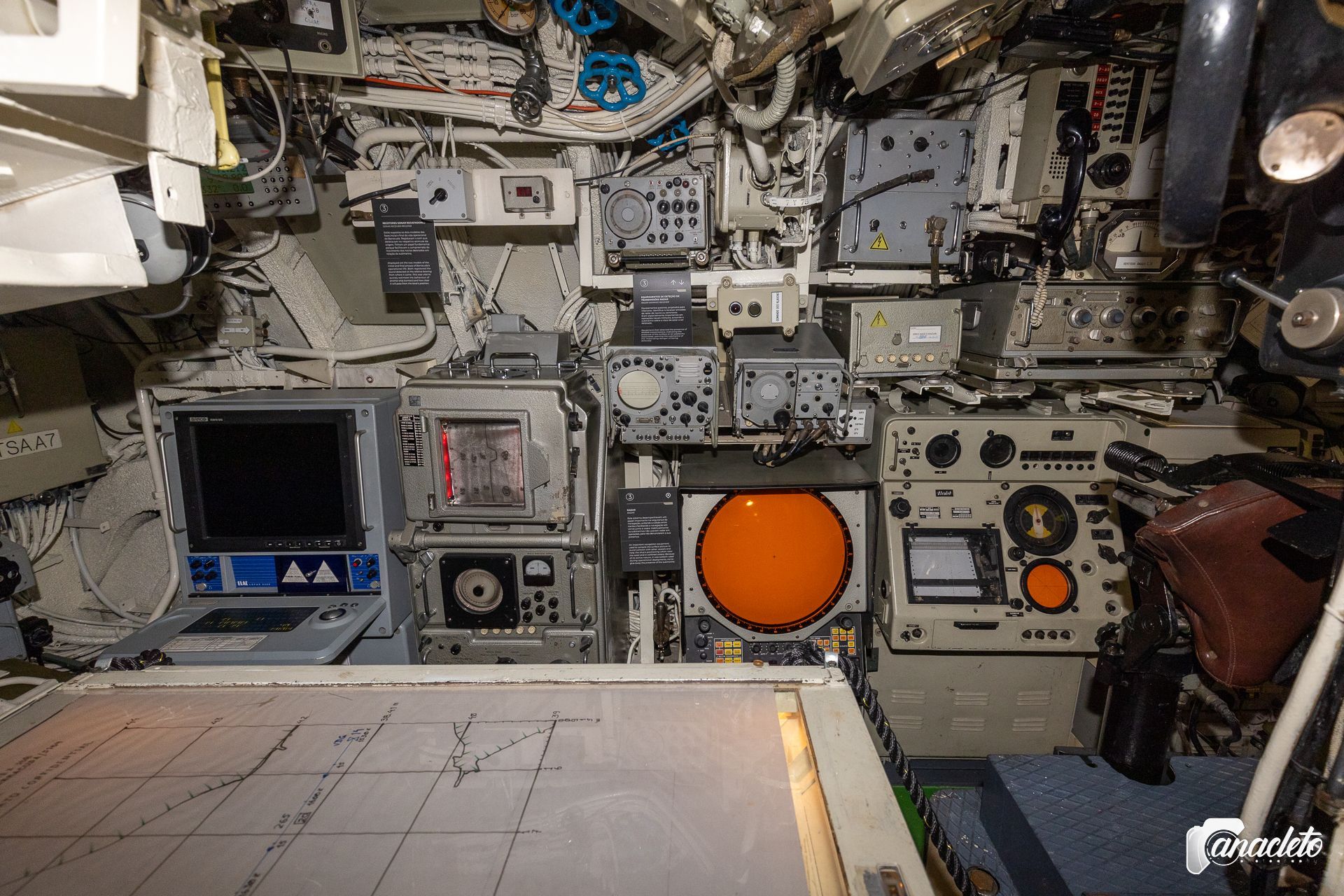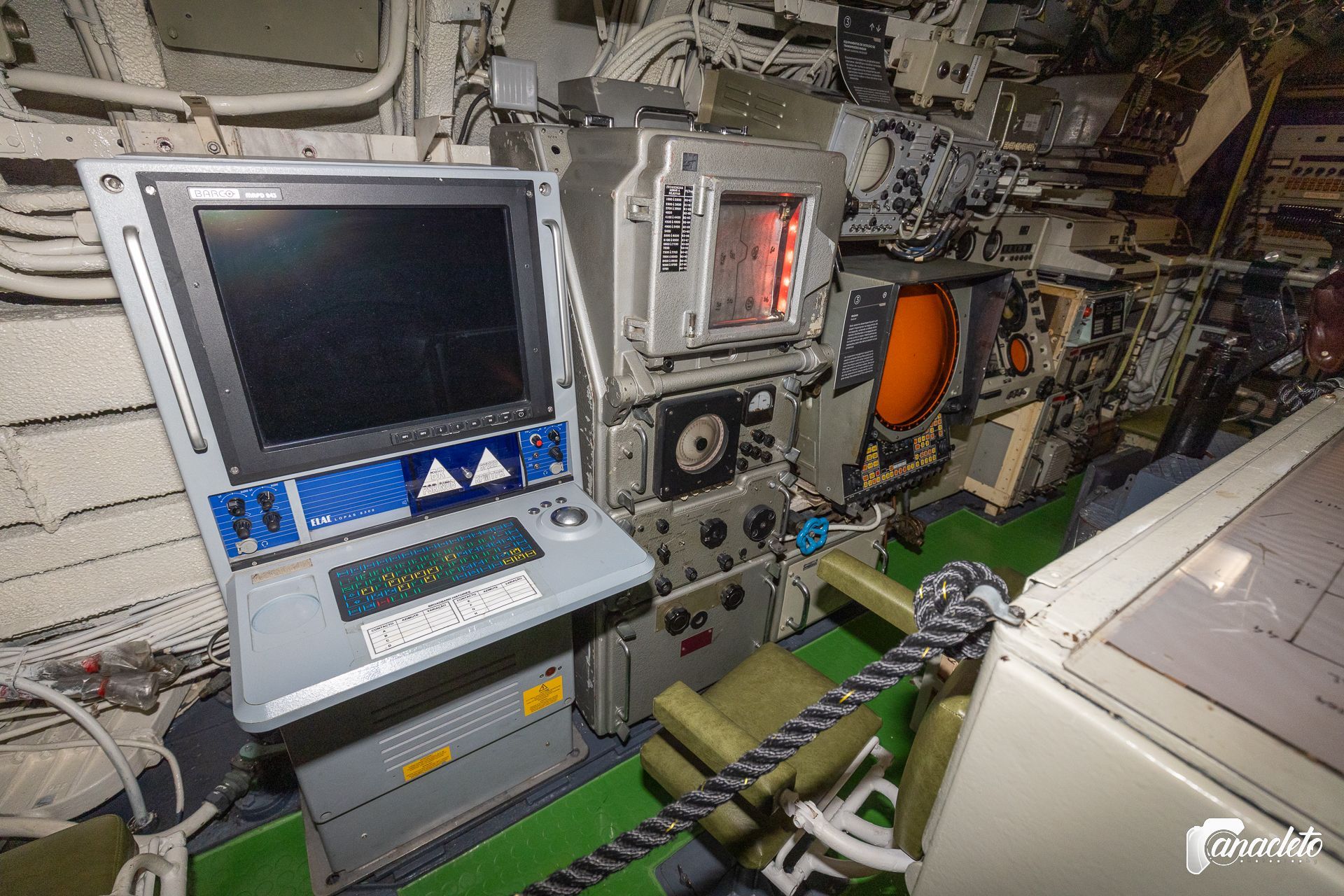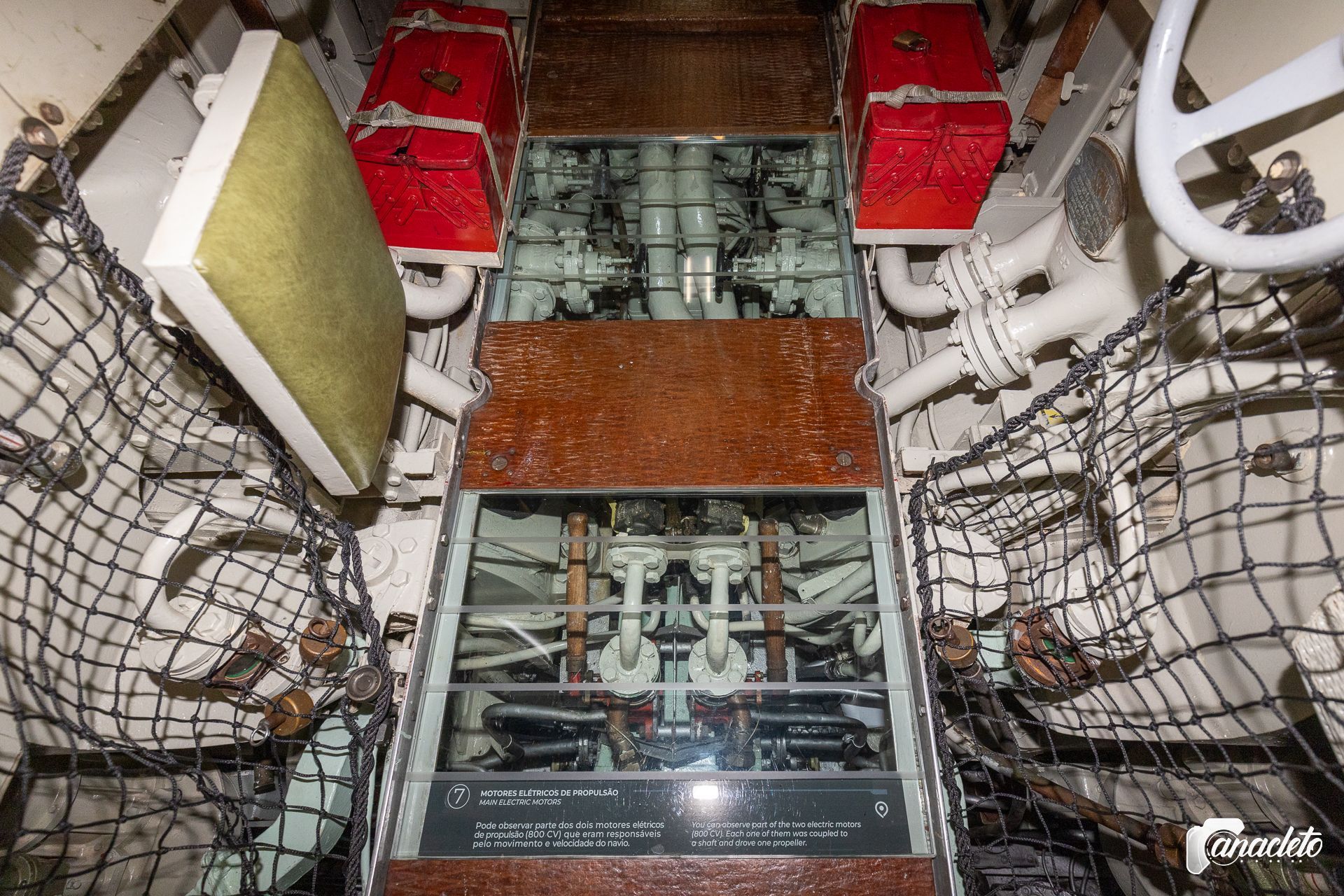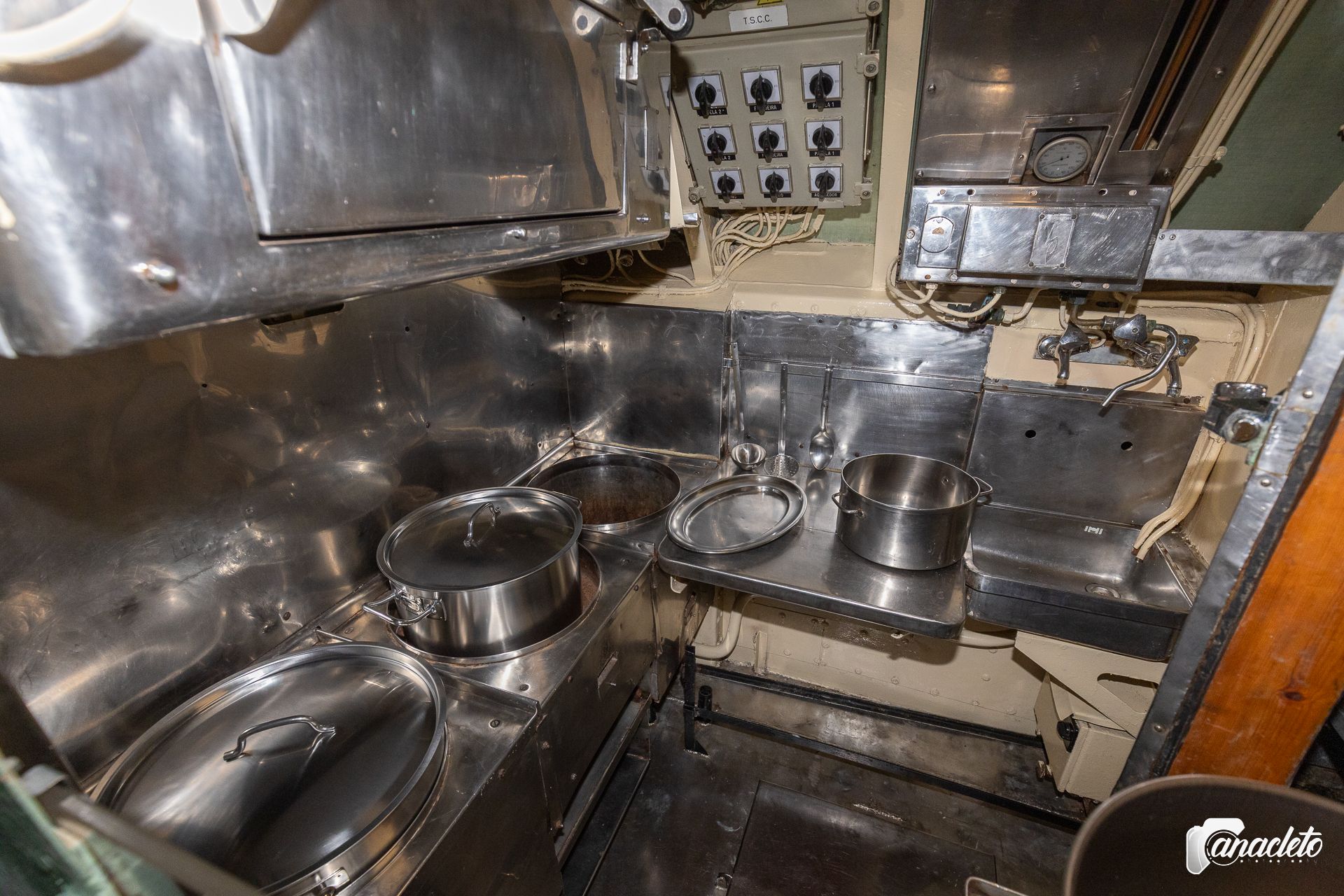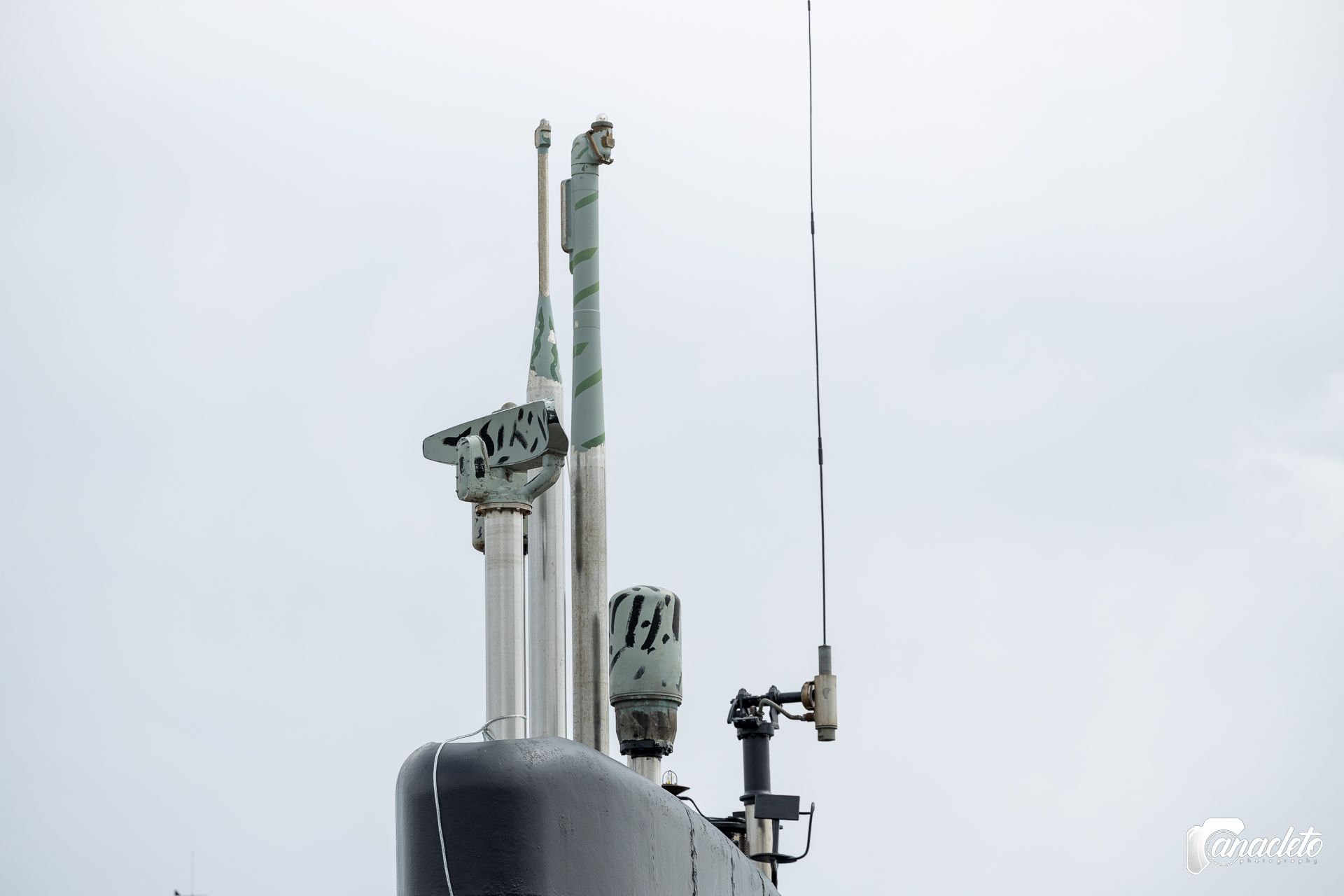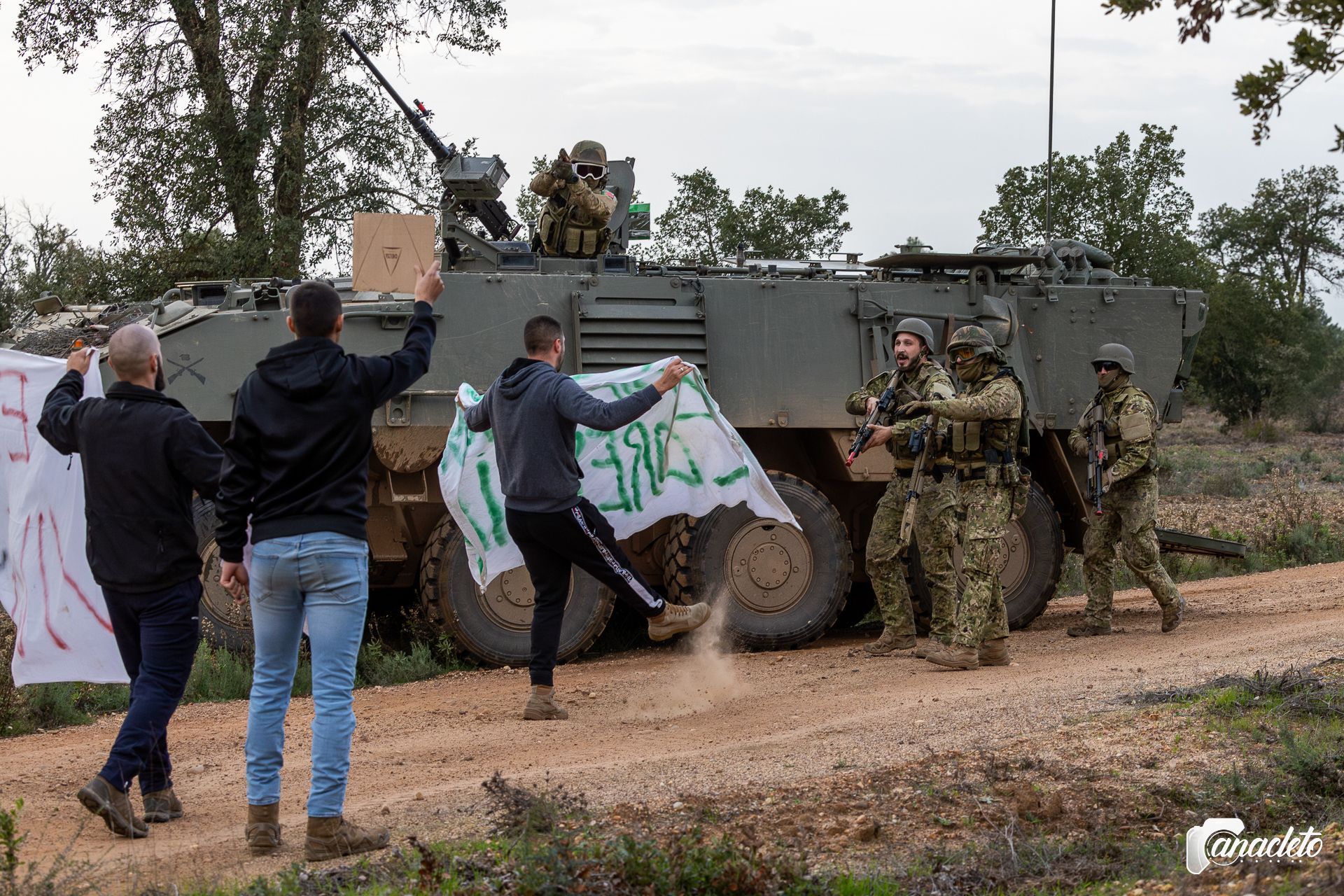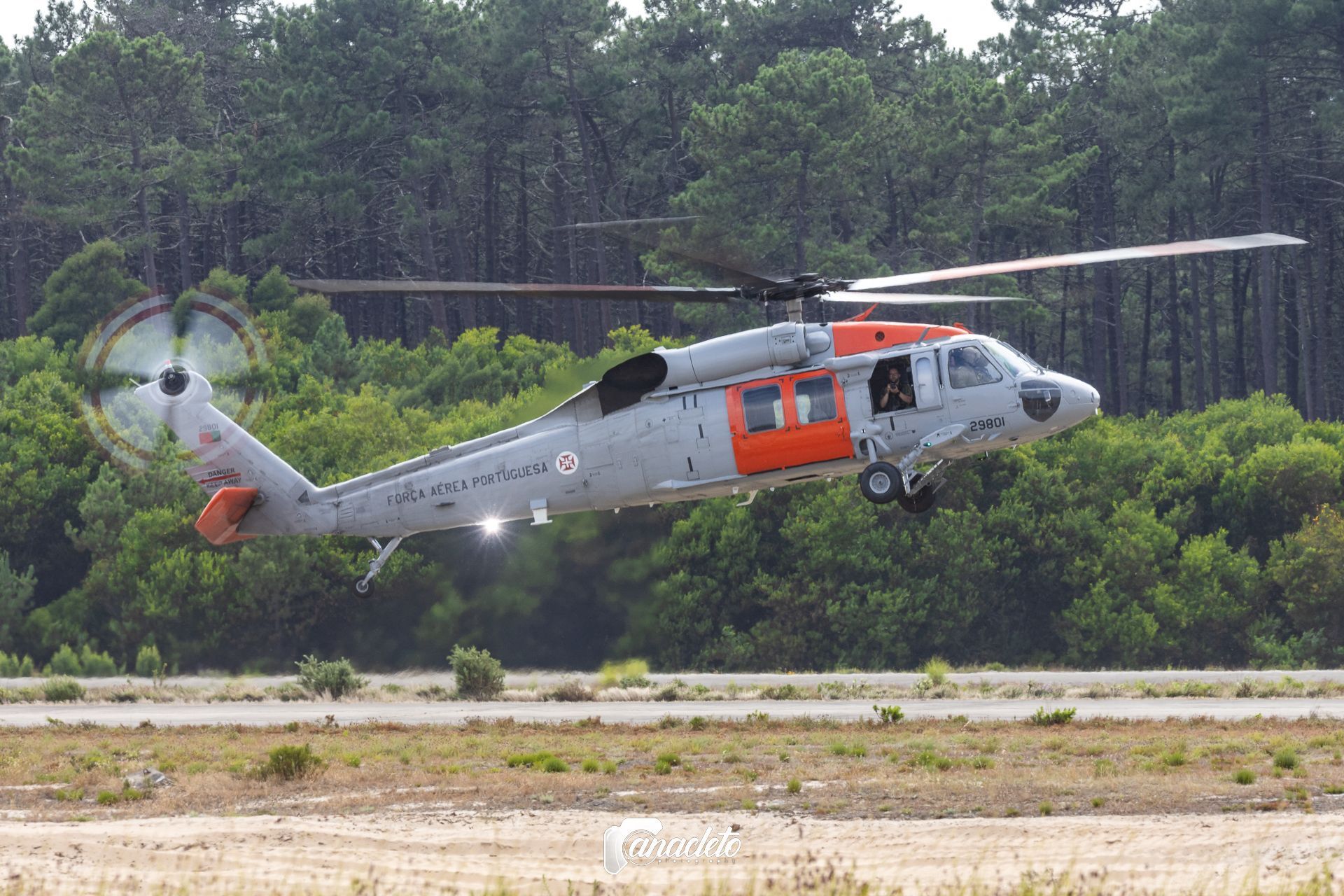NRP Barracuda - From the Depths to History
For years, the NRP Barracuda (S164) sailed silently in the waters of the Atlantic, carrying out surveillance missions and defending Portugal's maritime sovereignty. Today, it is anchored in time, transformed into Portugal's first submarine museum, allowing visitors to explore its interior and immerse themselves in the history of our Navy.

A brief history of the Albacora Class
In 1964, the Portuguese government ordered 4 submarines from the Dubigeòn Shipyard, based in Nantes, France.
These 4 submarines would debut a new class, the Albacora Class, and equip the new 4th Submarine Squadron, which would replace the 3rd Squadron that had operated the Narval Class submarines until then. They were built based on the design of the Daphné Class, in service with the French Navy, but with some adaptations to meet the requirements of the Portuguese Navy.
The first submarine to enter service was the NRP Albacora (S 163), in 1967. A year later, in 1968, it was the turn of the NRP Barracuda (S 164) to enter service. The squadron was completed in 1969 with the entry into service of the NRP Cachalote (S 165) and NRP Delfim (S 166).
After several years in the service of the Portuguese Navy and several successful missions, the time came for these vessels to take their “final rest”. The first to be decommissioned was the NRP Albacora, in 2000. It was followed in 2005 by the decommissioning of the NRP Delfim. In 2006, the NRP Cachalote, which at the time was sailing under the Pakistani flag and with the designation PNS Ghazi (S 134), ceased its activity, having been sold to that country in 1975, with France acting as the intermediary in this transaction. The NRP Barracuda was the last to be withdrawn from service, having been decommissioned in 2010, making it NATO's oldest submarine, having been operated by the same navy for 42 years.
Of the four submarines, only the Barracuda still exists today and is currently preserved as a museum in Cacilhas. There were plans for the Albacora and the Delfim to join it as museums, but this never materialized. In January 2011, the NRP Albacora, while moored at the decommissioned pier of the former LISNAVE, sank due to its state of deterioration and the weather conditions to which it had been subjected since it was taken out of service. It was later scrapped, along with its “brother” the Delfim. The PNS Ghazi (NRP Cachalote) suffered the same fate.
(Source: Facebook - Navios da Armada)
Main features
The NRP Barracuda had a garrison of 54 military personnel, and could take up to 65 people on board, including elements of the Special Operations Forces, Divers and Marines.
The conditions on board were not the most comfortable for these 54 military personnel, with only the commander having the right to a cabin. The rest of the garrison slept in what was known as a “hot bed”, as they only had a total of 36 fixed beds.
Specifications:
- DISPLACEMENT:
- 869 tons on the surface
- 1,038 tons in immersion
- DIMENSIONS:
- 57.7 x 6.7 x 5.2 + (tower 10.4) meters
- COMPARTMENTS:
- Rear station / Propulsion / Hygienic corridor, Control and auxiliary stations / Command post, Officers' quarters and battery cellars / Forward station
- PROPULSION and POWER:
- 2 x 450 kW electric motors
- 2 x 800 hp diesel-electric generators
- FUEL:
- 74 tons
- MAXIMUM SPEED:
- Surface - 13.5 knots (25 km)
- Submerged - 16 knots (30 km)
- Snorkel - 7 knots (12 km)
- AUTONOMY:
- 30 days immersion
- MAXIMUM OPERATING DEPTH:
- 300 meters
- RADAR:
- Navigation/search - KELVIN HUGHES 1007, band I (37 km range)
- SONAR:
- Thomson Sintra DUAA 2 (active and passive search and attack / 8.4 kHz);
- Elac Nautik LOPAS 8300 (passive search and attack / low frequency);
- VELOX M6 (acoustic interceptor)
- COMMUNICATIONS:
- UHF, HF, VLF, VHF transceivers;
- 1 General broadcasting network;
- TUUM 1A and TUUM 2A/B 50 kHz submarine telephone;
- W(SUB)-ECDIS and AIS satellite communications
- EQUIPMENT:
- 1 Type M observation periscope;
- 1 ST3 attack periscope;
- GPS system;
- IFF system;
- Electromagnetic odometer;
- 1 ALDIS signal projector;
- ECDIS electronic chart system;
- Sound speed meter in water;
- Ultrasonic probe;
- DGPS receiver;
- 5 navigation lights;
- 6mm tower glass;
- Barometer
- FIRE CONTROL:
- DLT D3 (firing direction calculator)
- ELECTRONIC WARFARE SYSTEM:
- ARUR/ARUD (radar alerter, mounted on the periscope)
- WEAPON SYSTEMS:
- 12 ECAN-L3 550mm torpedo launcher tubes (8 in the bow and 4 in the stern);
- ECAN L3 torpedoes (ASW/active/5.5 km range/25 knots);
- ECAN E14 torpedoes (ASW/ASUW/passive/5.5 km range/25 knots)
The fresh water capacity was 13,500 liters, so it was rationed, only for cooking and personal hygiene.
- OPERATIONAL USE:
- Force protection operations;
- Surveillance operations and discreet intelligence gathering;
- Conducting special operations and advanced support for amphibious forces;
- Operations to interdict focal areas, ports, coastlines or navigation zones of high interest;
- Collaboration in the fight against drug trafficking;
- Protecting coastal and ocean navigation in waters of national interest;
- Carrying out reconnaissance operations with the landing and gathering of special forces in actions requiring secrecy and surprise;
- Training student submariners.
Important milestones
- 24-Sep-1964: Signing of the contract for the construction of the 4th Squadron submarines
- 19-Oct-1965: Laying of the keel
- 24-Apr-1967: Launch into the water
- 04-May-1968: Increased operational strength
- 07-May-1968: First sailing
- 16-May-1968: First immersion (duration 1h 30m)
- 10-Nov-1968 to 13-Nov-1968: Voyage from Lorient to Lisbon
- Feb-1970: “Barracuda” took part for the first time in a NATO exercise “SUNY SEAS 70” with the “STANAVFORLANT”.
- Sep-1979 : First immersion rendez-vous exercise with Portuguese submarines.
- Sep-1982: “Barracuda” carried out the 1st anti-submarine attack with an exercise torpedo on the “Delfim”.
- Dec-1982: Barracuda launched to sink the M/V “Bandim”, a partially sunken ship that posed a danger to navigation.
(Spray resulting from the explosion of the L3 torpedo against the M/V Bandim / Source: Blog "Barco à Vista")
- 1997: “Barracuda” took part in “Operation Endurance” in the Atlantic Ocean, for 31 days without docking, refueling from the stern station of the “Bérrio” refueling ship for the first time at sea, an operation that had not been carried out by any Navy since the Second World War.
- May-2006: the “Barracuda” took part in the “SWORDFISH” exercise, serving as a transport and means of projecting the DAE onto the scene of operations, after being parachuted to a meeting point at sea.
- May-2009: the “Barracuda” carried out an exercise with the frigate “Bartolomeu Dias” as part of the demonstration for the Auditors of the National Defense Course.
- 27-Jan-2010 : Last sailing
- 02-Aug-2010: Switched to a state of disarmament.
(The Barracuda and a Lynx Mk95 helicopter / Source: Blog "Barco à Vista")
One of this submarine's greatest achievements was undoubtedly something that happened in May 1983, when the “Barracuda”, which was taking part in the NATO exercise “LOCKED GATE 83”, held in an area south of Cádiz - Spain, identified the approach of the Carrier Battle Group of the US Navy's USS Eisenhower nuclear aircraft carrier. This force was not part of the exercise, but was bound for the Mediterranean Sea to relieve the CBG of the 7th Fleet.
It should be remembered that the Cold War was raging and it was very important for the American forces to ensure the protection of all their military assets, especially the most valuable ones, such as aircraft carriers.
After analyzing the available data, it was possible to determine that the Battle Group would cross the northern limit of the patrol area assigned to the “Barracuda”.
Faced with the tactical situation and the irrefutable possibility of trying to simulate an attack on an aircraft carrier, it was decided to maneuver in such a way as to pass undetected through the “Eisenhower's” powerful protective cover, consisting first of ASW helicopters with active sonar and then of surface ships also operating active sonar. To do this, the Barracuda's crew used the sonar's shadow areas to make it more difficult to be detected.
This maneuver was achieved by using appropriate tactical options, allowing the “ Barracuda ‘ to successfully bypass the cover of the ’Eisenhower' and position itself on the same course and under the aircraft carrier, until it reached the position of a simulated torpedo attack, completely undetected.
After the action and as soon as the tactical and operational situation allowed, the “Barracuda” went to the periscope depth and transmitted a message to the entity conducting the exercise (CINCIBERLANT), reporting the action. The CBG only found out about the action afterwards, with the USS Eisenhower Force Commander asking CINCIBERLANT to send him the submarine's records in order to confirm the action.
At the end of the exercise, the “Barracuda” received the following personal congratulatory message from Rear Admiral Deputy CINCIBERLANT:
“FOR BARRACUDA, THE RARE OPPORTUNITY OF ATTACKING A CARRIER MUST HAVE MADE YOUR DAY. BRAVO ZULU AND GODSPEED.“ (”Bravo Zulu.” Code for: ‘Well done.’)
- The Barracuda ended its operational service with:
- A distance covered equivalent to 12 laps around the world;
- 263,358 nautical miles, of which 180,000 were immersed;
- 52,622 hours sailed, 68.1% of which were immersed;
- 3090 days at sea.
(NRP Barracuda and its "brothers", the Albacora and Delfim / Source: Operacional.pt | Photo:Luís Silva )
Museological Space
On July 25, 2013, the NRP Barracuda was taken to one of the docks of the former Parry & Son shipyard in Cacilhas, Almada, where it will be placed to rest. It was placed next to the D. Fernando II and Glória frigate, thus becoming part of the Portuguese Navy's museum hub, with the aim of contributing to naval culture in Portugal.
(Arrival at the one of the docks of the former Parry & Son shipyard in Cacilhas / Source: “Ships & The Sea” Blog)
For several years, there was doubt as to whether the Barracuda would ever be open to the public. But after various restoration and restructuring works, that day has arrived.
The inauguration ceremony took place on May 9, 2024, and was presided over by the Chief of Staff of the Navy, Admiral Henrique Gouveia e Melo, and was attended by the Mayor of Almada, Inês de Medeiros, among others. The submarine was opened to the public on May 11 and is open from Tuesday to Sunday from 10h00 to 18h00.
Its location is very accessible, either by boat or by public transport or car (it has a parking lot), making it a good destination for a little “Sunday stroll”, where visitors will have the opportunity to learn all about the history of this submarine, see the conditions in which the military lived and, above all, be able to experience this reality first hand, without being surrounded by water.
Final Reflection
The NRP Barracuda is not just a piece of naval engineering or an artifact from the past - it is a silent symbol of bravery, resilience and dedication to the service of the country. By being transformed into a museum, this submarine has been given a new mission: to keep alive the memory of all those who, between cramped compartments and long periods submerged, guaranteed the sovereignty and security of our country. Visiting the Barracuda is more than exploring a ship; it's diving into a legacy of sacrifice and honor, and remembering that history is also built underwater, often in the deepest silence.
